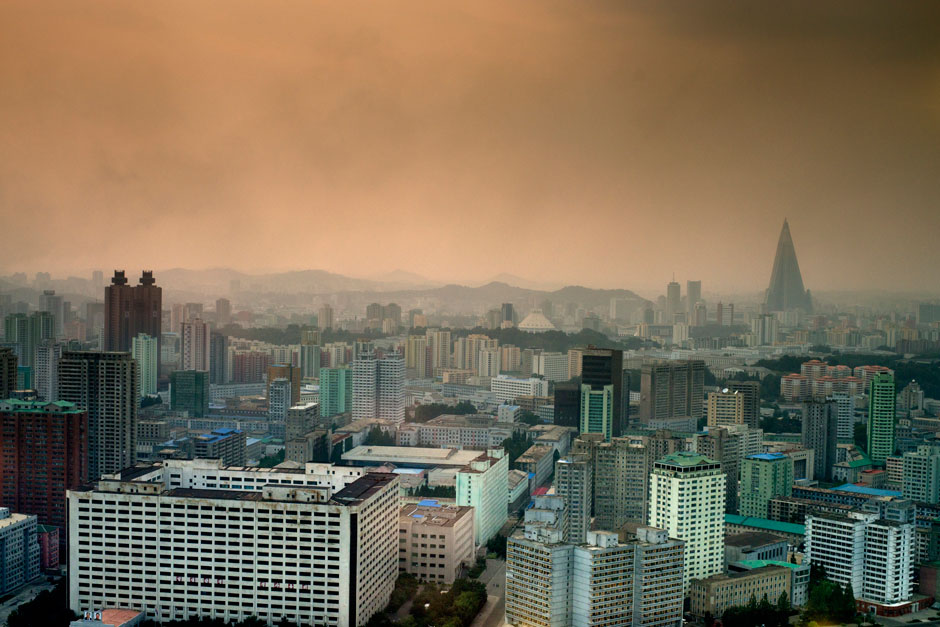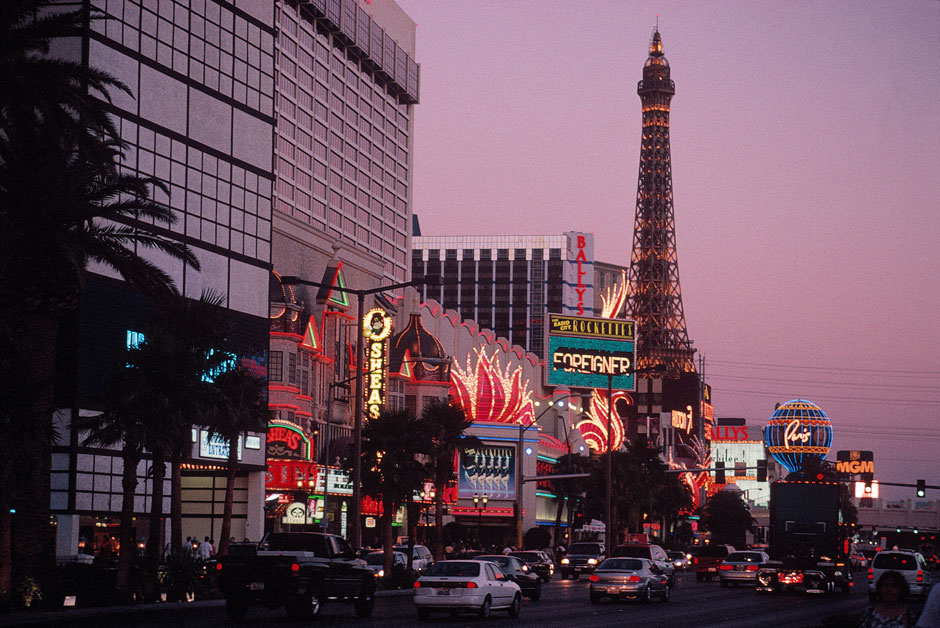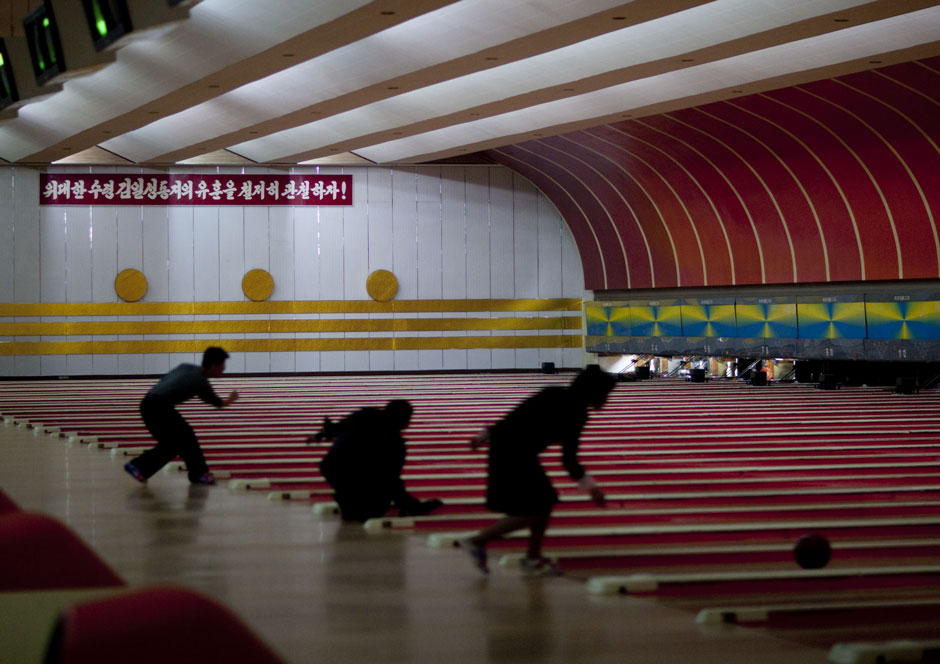Drawing back the curtains in my nineteenth-floor hotel room in Las Vegas last year, I looked out on a sand-colored landscape that was mostly emptiness. Cars were trickling along the broad freeway through the desert, and I could see the edge of a few look-alike high-rises; otherwise, there was no sign of life for as far as I could see. The minute I stepped out of the front door of the thirty-six-story structure, however, I was confronted by what passes for real life here: a mock Eiffel Tower, an enormous glass pyramid, a pseudo-Venetian lagoon, and dozens of circuses and pleasure domes offering images of the wider world for those who will seldom see it in the flesh.
Just twenty-four hours later, I found myself on a plane flying across the ocean to arrive in another high-rise hotel, this one forty-five stories high, which might have been found in a different corner of the same city. Not far from my room was an Arc de Triomphe (thirty feet higher than the one in Paris). Minutes away was the tallest tourist hotel in the world, a 105-story construction in the shape of a rocket. Theaters in the shape of water-mills, Ferris-wheels, and Legoland skyscrapers, gleaming Olympic stadia lined the wide avenues for which Pyongyang has long been famous.
People were walking along the immaculate lawns, though they might have been figures in an architect’s model, so staged and formal did their movements often seem. Where the North Korean capital seemed as vacant and two-dimensional as a textbook photograph, Las Vegas was overflowing with an excess of animal high spirits; but both really felt like hallucinations, designed to dazzle (or defeat) the innocent.
Any of us could, of course, list the differences between the two cities of mirages. The one is a shameless efflorescence of capitalism that is, for its enemies, a glittering symbol of the decadence and emptiness of the West; the other the world’s last by-the-book, state-controlled monument to Stalinist brutality, whose forty-story blocks are consciously designed to cow citizens and remind them that it’s a privilege never to leave their hometowns without permission or to be executed simply for glimpsing a foreign newspaper.
The one is a sort of adolescent’s Girls Gone Wild vision of freedom run amok, in which visitors are encouraged to believe that you can do and be anything you like, for a night; the other is a terrifying model of order and regimentation in which even the woman who chatted me up on a showpiece subway train might well have been a prop set there by the government. While drunken frat boys get themselves photographed next to bikini-clad showgirls dressed as flamingoes on Las Vegas Boulevard, in Pyongyang every visitor—on every visit—is obliged to get up in jacket and tie, pass through a dust-cleaning machine, and bow before the embalmed figures of the nation’s two departed leaders. When Hunter Thompson wrote, “For the loser, Vegas is the meanest town on earth,” he hadn’t been to Pyongyang, where even the sometime-winners are abruptly sent before the firing squads.
Yet both cities are products of a mid-twentieth-century spirit that saw what power and profit could be found in constructing mass fantasies ab nihilo—in the deserts of the West, out of the rubble of the Korean War. And both serve even now as billboards of a kind, “theoretical and practical weapons of the system,” as Kim Jong Il had it in a 180-page treatise on architecture, with buildings designed less to be lived in than to be marveled at by friends and enemies alike. Pyongyang is at once a playground for the local elite and a perpetual reminder to the 90 percent of North Koreans who are not permitted to visit of what awaits them if their talent or patriotism—or beauty—are strong enough. But both cities are haunted by a kind of lottery consciousness, which declares that power and glamour can be yours only if divine whim (or a throw of a dice) so decrees.
Foreigners guided through Pyongyang’s set-pieces are painfully conscious that they’re being shown a Potemkin world; in certain respects, little has changed in the showcase capital since my first visit, in 1990, as Kim Jong Un seems to upgrade the vision of his grandfather as faithfully as a disciple might repeat the words of his god. Visiting the Paektusan Academy of Architecture in the North Korean capital last year, I was greeted by a large display of images of the world’s greatest buildings, surrounding glorious scale models of Pyongyang; it was hard not to suspect that North Korean’s planners were devoutly mimicking the outside world, even as they claim their every new building is a testament to the “Juche Idea,” which boasts of self-sufficiency and North Korean exceptionalism. And even though theme-park extravaganzas are hardly unknown in neighboring China or Japan, North Korea’s monuments are built not with the entertainment or needs of regular folks in mind, but only as tributes to leaders for life and beyond. Each new confection is as out of context, as weirdly without a sense of time or space, as the North Korean’s government’s occasional provocations or sudden, mercurial threats.
Advertisement
Sometimes I stepped out of my little box in the Spa Tower of the Bellagio, and walked through the thronged rooms of Picassos and gourmet burgers and over-dressed couples throwing dice before buying tickets for tonight’s R-rated Cirque du Soleil performance. Out under the hot desert sun, I was within minutes so overwhelmed by the flashing lights, the oversized replicas of the wonders of the world, the vouchers offering all-you-can-eat meals for a couple of dollars a pop that I reeled back into my sealed, climate-controlled cell. In Pyongyang, I was not allowed to venture out of the hotel alone, though assured that I could take a walk or a jog so long as I brought along a minder. But even in North Korea, I was encouraged to admire all the latest developments: two new Italian restaurants, a thirty-six-lane bowling alley my guides claimed to visit on dates, the occasional BMW nosing along the spotless streets toward another marble and chandeliered subway station.
Yes, there is no Internet for locals in North Korea (only an Intranet that can seem as closed a circuit as the channel on my TV in the Bellagio projecting images of the Bellagio). And yes, when I asked for tea in the vast banquet-hall where I was handed a single slab of bread and an egg every day for breakfast, four waiters convened a panic-stricken conference in one corner of the empty space before coming back to tell me I could acquire such luxuries only if I paid (a moot point, since I was not permitted to carry North Korean money). Yet Plato’s Cave can look much the same in East or West, whether its screens are projecting images of tumbling cheerleaders or brigades of goose-stepping soldiers.
What plays in Pyongyang stays in Pyongyang, of course. When you drive out of the vast triumphal gates that surround the city, you are quickly in a landscape of starved farms and rickety villages where everyone seems to be shuffling along very slowly beside the Heroic Youth Motorway, on foot, or by bullock-cart, mocked by the spectacular skyscrapers they’ll never see (and whose unnecessary height, like that of my hotel, is said to be achieved by dummy floors). The artworks we foreigners are encouraged to buy (for up to $400,000) seem to belong to a different planet from a country where 80 percent of the citizens lack even the most basic dietary requirements needed to survive. The BBC World I could watch on my TV, like the international dialing said to be possible from the white telephone by my bed, would never be available to the locals, for whom a single egg or slab of bread might be a windfall.
One evening, returning to Pyongyang after a day along the DMZ, I stepped into the Koryo to find a clatter of camera crews and journalists with notebooks surrounding some jumbo-sized American sportsmen and the aging Japanese wrestling champion, Antonio Inoki. Minutes later, Inoki, who’d played himself in The Bad News Bears Go to Japan, was waving to a packed crowd in a state-of-the-art auditorium before taking in, along with the few other foreigners visiting the city, the opening ceremonies of an international wrestling competition: stage-wide images of North Korean glory projected behind gorgeously dressed and perfectly synchronized choirs. Two days before, I’d seen—inevitably—high-wire artists and smiling girls on trapezes execute wonders of discipline and teamwork that might have inspired cries of amazement at Vegas’s Circus Circus.
Once the final chords had sounded, I and the others in my group—seven of them American, the others from Germany, Scotland, and Iran—found ourselves on a riverboat, drifting past the phantasmagorical theaters, neon tubes around the latest street of extravagantly lit glass towers, built in 2012 to commemorate the one hundredth anniversary of the birth of Kim Il Sung. Images of North Korean patriotism came up on a karaoke screen, and three waitresses started crooning as if trying out for a cocktail lounge. On the bus back to the hotel, one of our guides—a sweet, English-fluent beauty who could have been a hostess at the Bellagio—grabbed a mike and joined in on “My Way.”
Advertisement
The night was yet young, as they say, so I walked past the 1970s-style decorations in the basement, down to the room where two ping-pong tables were on offer. In one corner was a pair of slot machines; just down the corridor, a place advertising “Massages” in which, it was rumored, happy endings were all but guaranteed.





